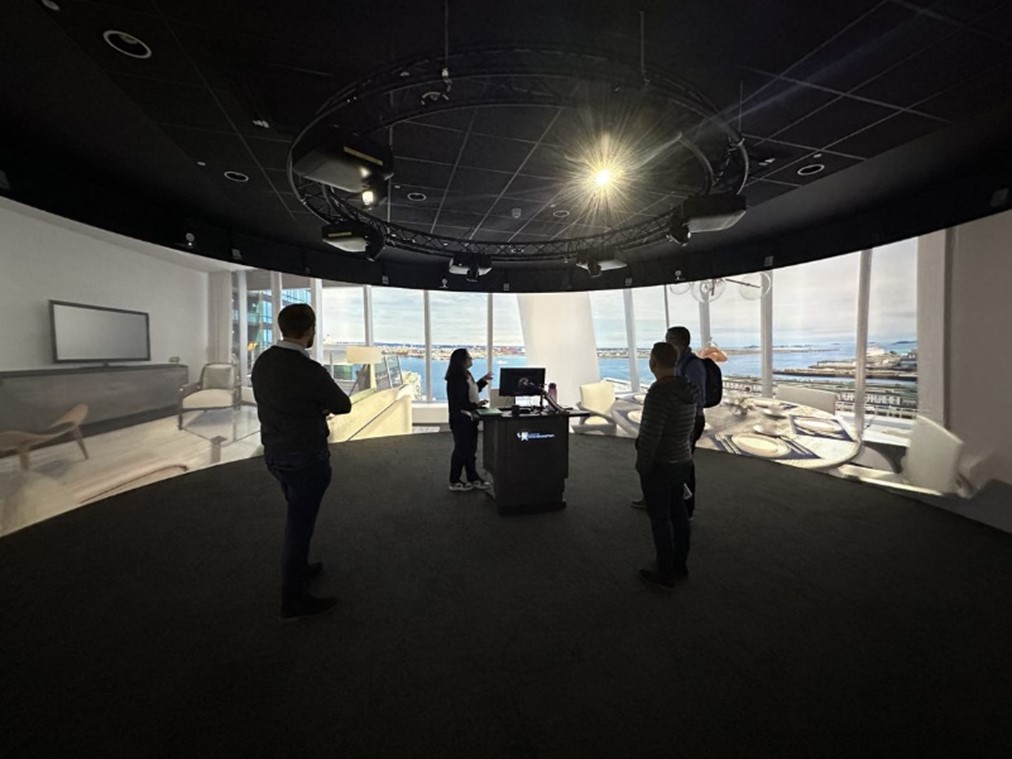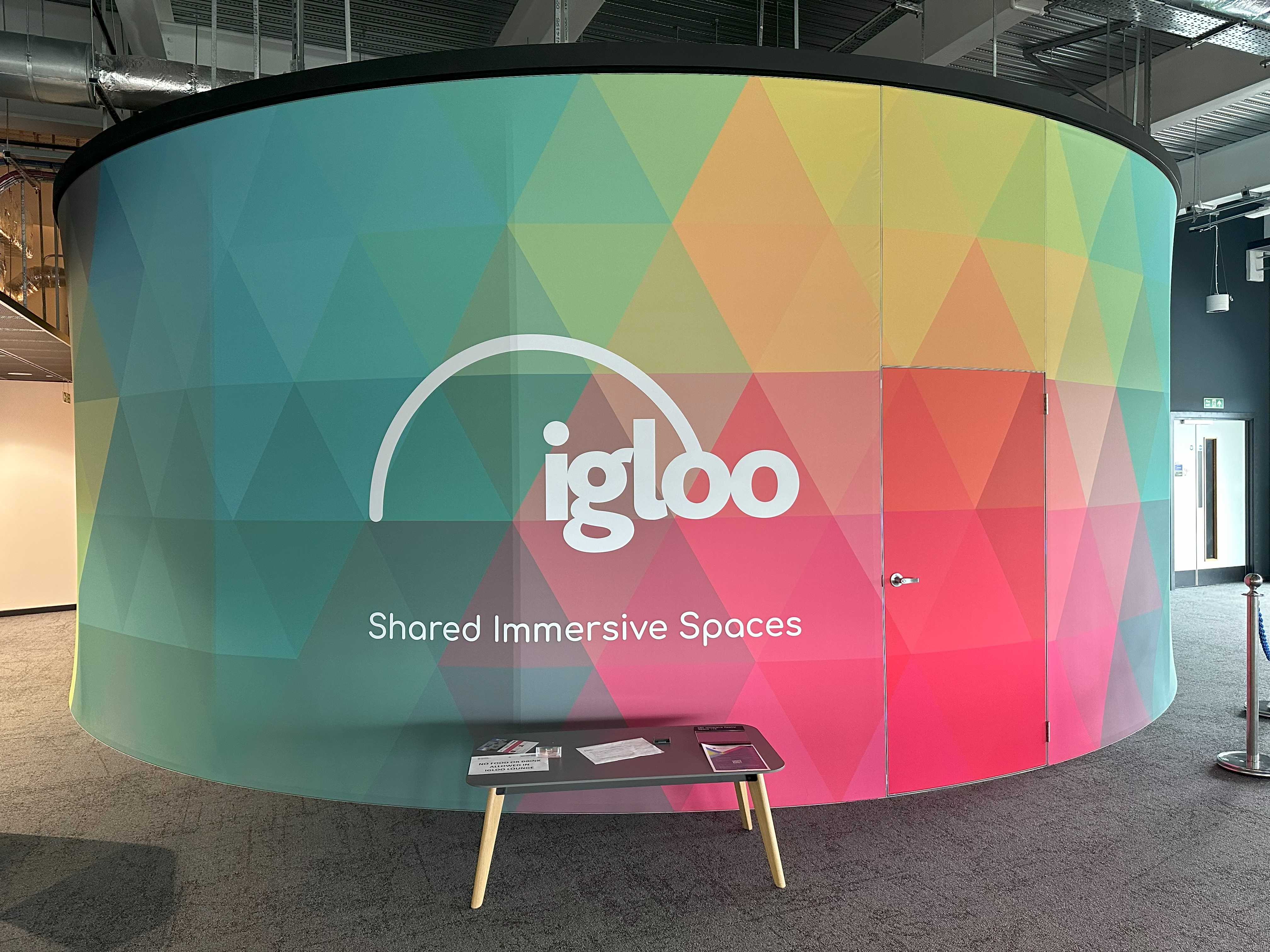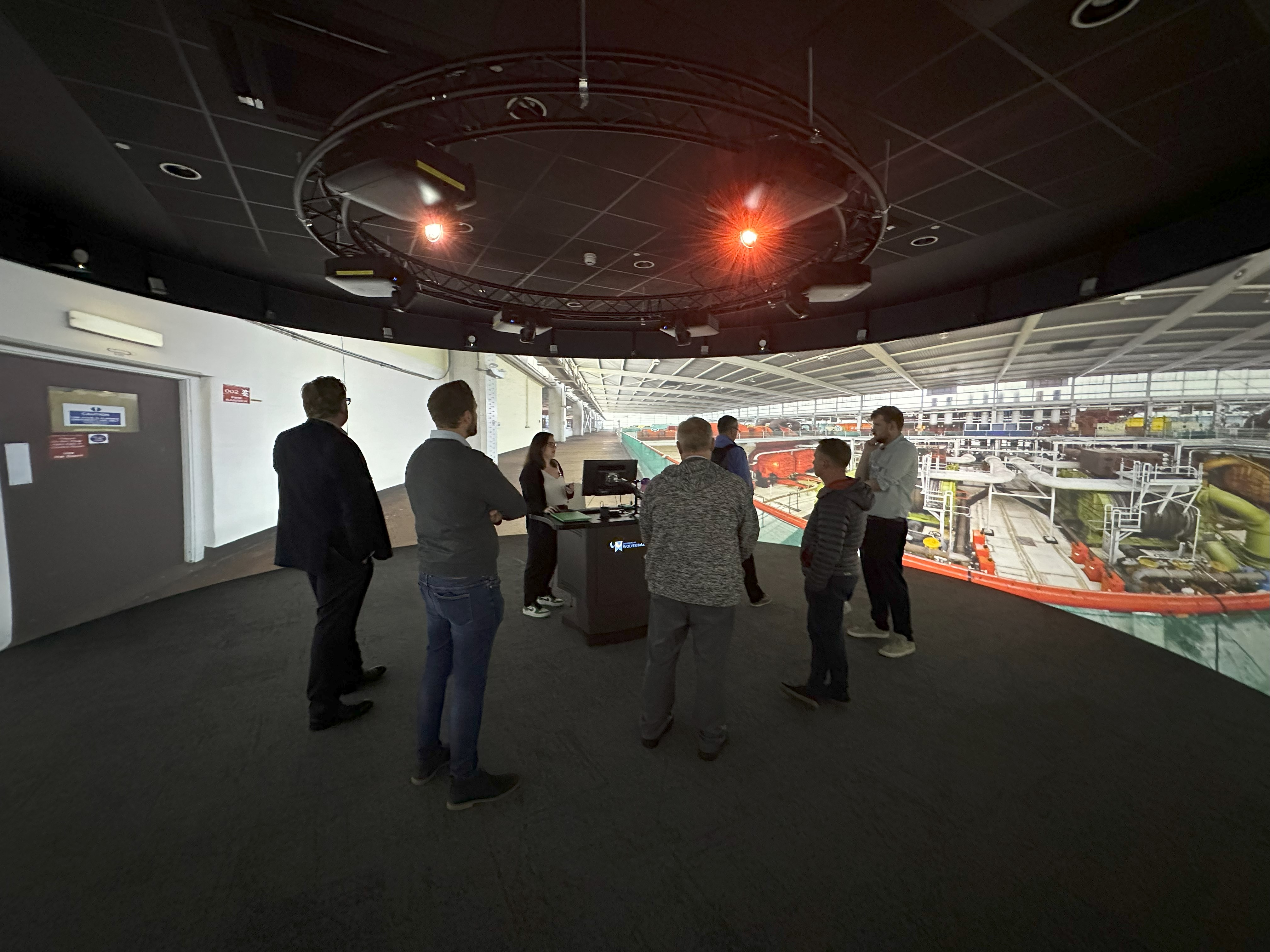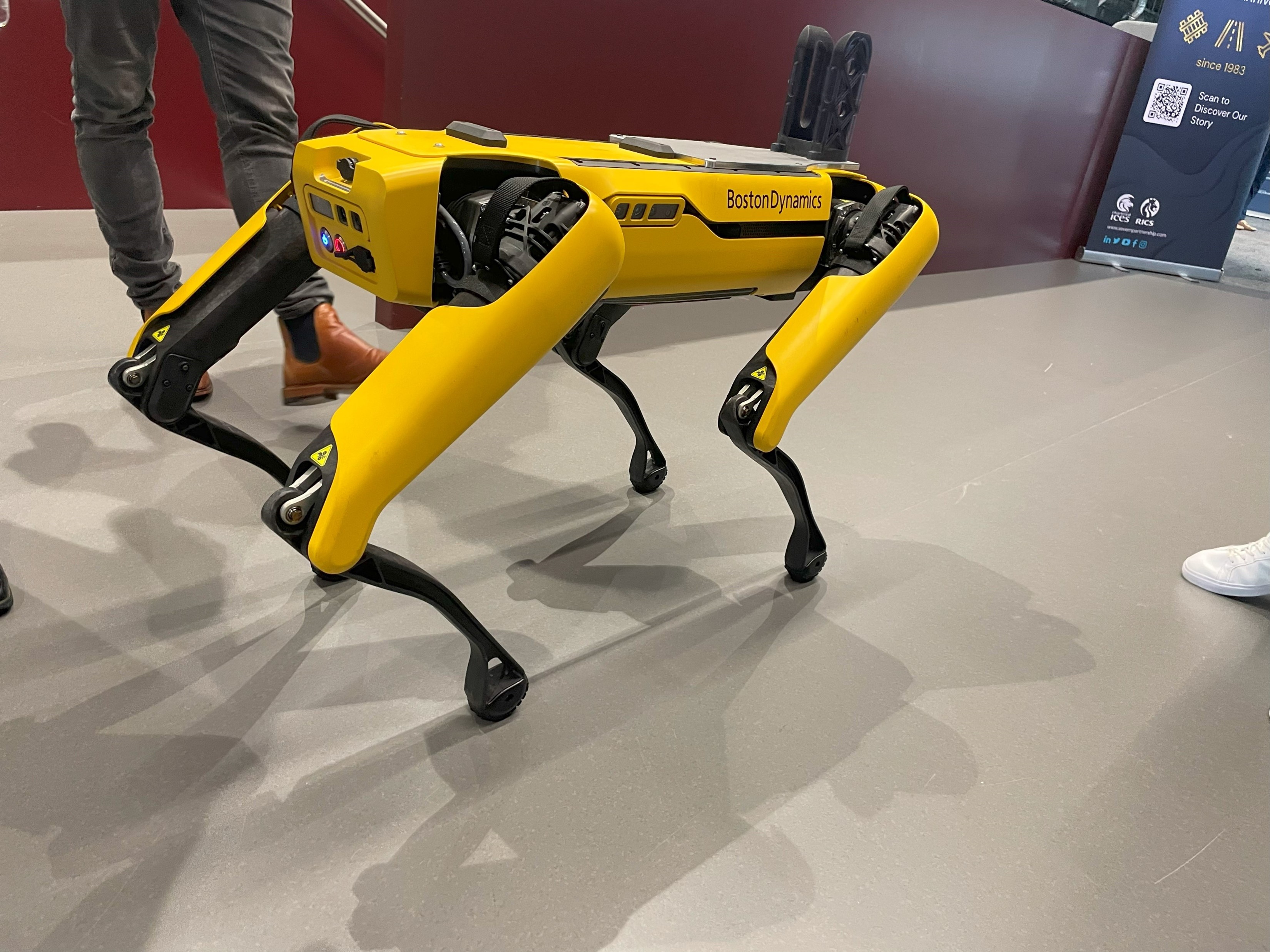Displaying digital twins inside an Igloo and fast-tracking digital transformation
What we learned at Towards Digital Twins and Factory 4.0

In September, the Igloo team were invited by Severn Partnership to contribute to a day exploring the latest digital approaches to construction, engineering and manufacturing at the University of Wolverhampton, at an event called Towards Digital Twins and Factory 4.0.
The event was a fantastic opportunity to revisit the Igloo at the University’s National Brownfield Institute, to explore developments in data capture and digital twins and demonstrate how our operating system for immersive rooms – known as Igloo Core Engine (ICE) – is ideal for visualising many of the BIM, digital twin and 3D design tools that are powering digital transformation.

The Igloo at the National Brownfield Institute
The National Brownfield Institute at the University of Wolverhampton is a world-class centre dedicated to supporting land remediation and regeneration across the Black Country, West Midlands.
As part of its remit to support local, regional and national businesses, the NBI hosts a whole range of state-of-the art facilities and technologies – including a massive 9-metre Igloo immersive cylinder.
The Igloo can accommodate up to thirty people and is an ideal space for project planning, onboarding specialist teams, carrying out design reviews and stakeholder engagement. One of the big advantages of Igloo is the flexibility of the software. Igloo Core Engine (ICE) is capable of displaying almost any content, in any configuration, on any display. This means many industry-standard BIM, CAD and 3D modelling tools work out of the box with an Igloo, and Igloo’s expertise in visualisation and features like True Perspective ensure that all content is accurate and to scale.

True Perspective is a tool unique to ICE which dynamically adjusts content depending on the viewer’s perspective and the display’s configuration, delivering an authentic 3D experience that preserves sightlines and upholds spatial dynamics.
At the Towards Digital Twins and Factory 4.0 event, we explored Igloo’s compatibility with various advanced data capture and modelling tools, gaining insights into the latest advancements in the field:

- Unity capabilities keep on growing with a huge fan base – One of Igloo’s best-used integrations is for the Unity game engine, which is hardly surprising given Unity has over 2.7 billion monthly active end users and is responsible for powering over 60% of AR and VR content. It’s also a big player in the AEC space as Unity Reflect makes it easy to import tools like Autodesk Revit, BIM 360°, Navisworks, SketchUp, and Rhino into the game engine – making it possible to incorporate physics, realtime data and interactive elements into digital twins.
- Point cloud scanning is supercharging building surveying – Modern point cloud scanners can rapidly capture thousands of data points with precision. And with integrated photogrammetry, these scanners are capable of creating visually rich and accurate models of a site or facility. Thanks to Martin Harrington for his demo of the NavVis VLX 3, a wearable mobile mapping system which can capture detailed site data, both indoor and outdoor – all it takes is a short walk around a project site. And of course, we have many clients using Igloo to visualise point cloud data.
- And some surveys don’t even need a human to do the walking – Spot the robotic dog by Boston Dynamics is definitely one of the more eye-catching pieces of tech at the NBI (except for the Igloo of course). Paul Davies of the University of Wolverhampton gave a demonstration of how the bot, equipped with Lidar scanner, can carry out an automated survey of a building site, navigate stairs and avoid moving objects. We even saw a glimpse of Spot’s digital twin being trained inside the Unity game engine, which could be visualised inside an Igloo.

The Towards Digital Twins and Factory 4.0 was a showcase of the latest advances in 3D data capture, modelling and visualisation. Igloo shared immersive spaces enable project teams to view this data in a shared environment and because the Igloo Core Engine software is so flexible and constantly evolving, it’s ready to display almost any of the digital tools that are transforming the construction industry.
If you want to find out more about how Igloo can benefit your business, get in touch to book a demo today.
Get in touch
Back








 Augmented Reality Vs Virtual Reality
Augmented Reality Vs Virtual Reality Virtual Reality: The Software Behind The Science
Virtual Reality: The Software Behind The Science What to look for in an immersive space
What to look for in an immersive space Unlock the potential of an Immersive Space in Education
Unlock the potential of an Immersive Space in Education How does immersive technology improve work relationships?
How does immersive technology improve work relationships? How shared immersive spaces can supercharge training – from the boardroom to the factory floor
How shared immersive spaces can supercharge training – from the boardroom to the factory floor
